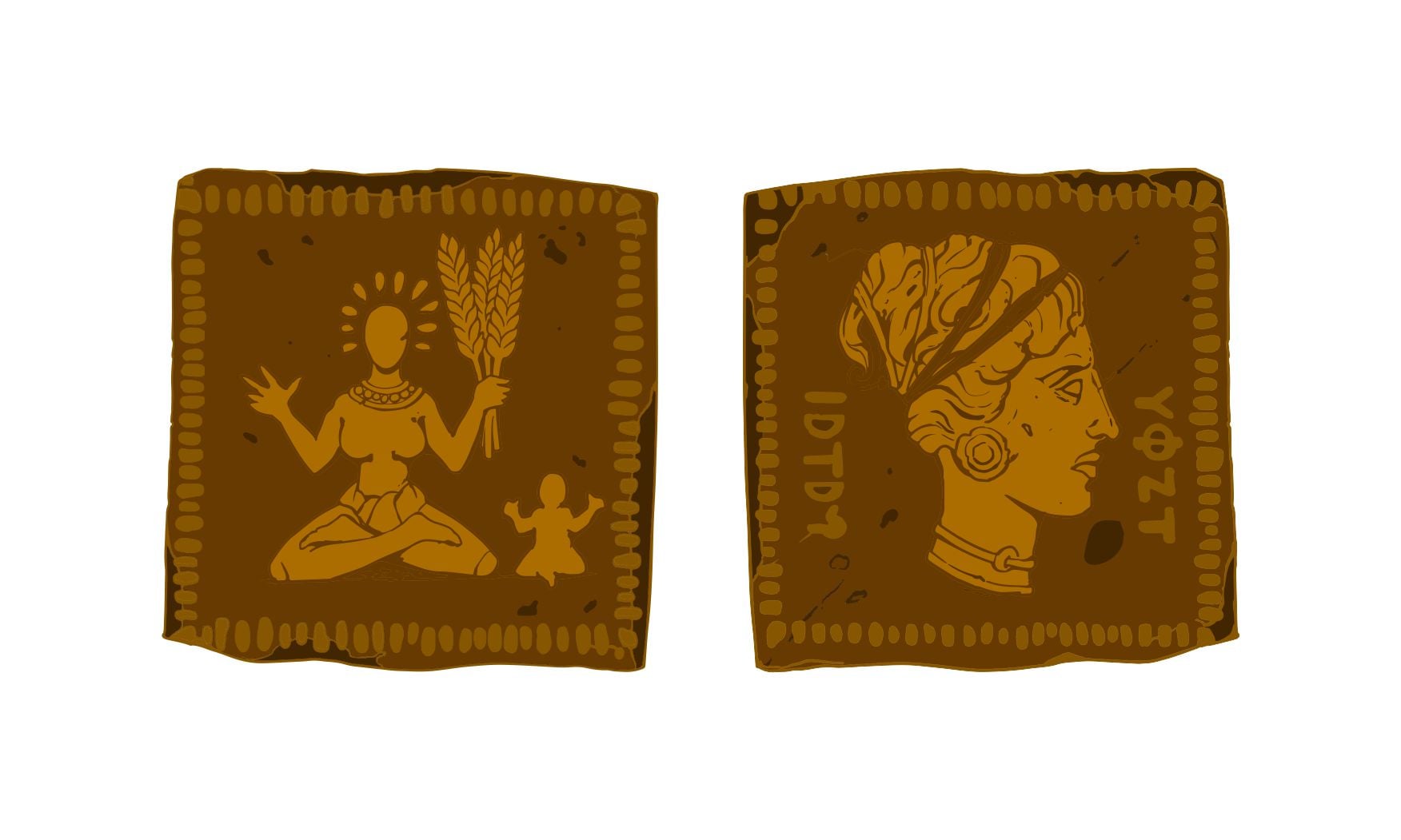So we’ve talked about where Sartar and the Lunar Empire gets its revenues, as well as a little digression on Seshnela and Loskalm. But want to talk about rich? The Holy Country is about 3.25 million people, and its port cities are very rich from collecting taxes and tolls from merchants passing through. They are the first sea-borne source of the Pelorian exchange route, and the gold collected is used (among other things) to pay for their fleet.
From 1580-1616, much of these revenues would have been at the disposal of Belintar. Now the various cities and Sixths grab what they can, with Nochet taking the lion’s share, but Rhigos and Karse both rich cities (other places like Refuge gain little as they are not on major trade routes).
So let’s think what that means for the Queen of Esrolia. Not only does she have the vast agricultural resources of that land at her disposal, thanks to her position as the head of the Ernalda cult, but she also gets toll collection for every ship that comes into Nochet. Plus market fees from the largest market in Glorantha. I expect she has revenues comparable to the Prince of Sartar at the height of that dynasty, and perhaps greater (as not all trade going through Nochet goes to Peloria – much is for local consumption in Kethaela or for export elsewhere in the world). Since Esrolia doesn’t maintain a large standing army (unlike say Argrath and his Praxian horde) much more of that surplus gets spent on art, spice, and other luxury goods.
So go southwest, young artist, southwest!
![]()
![]()
In some stories, Argrath was a year husband of the Esrolian queen (who by all accounts was young and beautiful). But the Feathered Horse Queen is the sovereign of Dragon Pass, and traditionally more important in Sartarite ambitions.
So although Esrolia is not Egypt, if you want your decadent Ptolemaic court, Nochet and its fabulously rich queens with luxuries from all over the world can give you want you want.
Part of the Holy Country includes the RIght Arm Islands. These scattered fishing villages have always been tied to the Mirrorsea Bay, and preserved the rites of appeasing the powers of the deep oceans through their close relationship with the triolini beneath the waters. The cults of Dormal, Diros, and Choralinthor make up nearly half the population, with Orlanth and Ernalda in a decidedly second tier.
Since the Opening in 1580, they now provide the shipmen for trade and warships. By Belintar’s decree, they were responsible for all matters in the Holy Country, and out of it.
The islands that provide crew and captains for the fleet are expect from all taxes as long as they provide the crewmen as needed. Since the disappearance of Belintar, the city of Nochet provides most of the financing for the fleet and the islands are closely tied to Nochet.
Remember, that blue-water transport has only existed since the equivalent of 1975. So I suspect fishing is the main way the islanders learn rowing. Which of course means, that folk typically use rowing boats on the Mirrorsea.
So what we might imagine is that the traditional fishing boat of the Islanders is a long and narrow row boat, like a caïque. The design was a hold-over from the Second Age, with the sail removed (not really necessary or that useful on the Mirrorsea Bay given the short distances). The Islanders claim this is the boat of Diros.
This sort of rowing vessel got modified by Dormal into a bireme with a single-square rigged sail, a bronze ram, and a sentient figurehead.
Within a few years, Dormal figured out how to construct and man triremes and quadriremes. Fore and aft rigging allowed them to tack quickly and successfully. I wouldn’t be surprised if Belintar had hexaremes built and perhaps his own ship was an even larger polyreme. I Imagine in the last two generations we’ve witnessed an explosion of ingenuity in ship design in the Holy Country. But instead of building fleets of hexaremes, we get a few hexaremes, a bunch of relatively inexpensive triremes, a weird catamaran with a catapult, and other strange inventions.
About a decade ago, the Holy Country navy introduced the widespread use of ship-mounted heavy engines. However, they were foremost in expanding the size of their ships, and had already adopted the use of something similar to the Roman corvus and air elemental-dropped grapples.
The Holy Country fleet traditionally consists of 3 equally sized parts, each with its own fleet guardian spirit and practiced bands of magicians and priests. It is well organised and disciplined, and works in close cooperation with the Choralinthor merman tribes.
The fleet is uninterested in expansion, being content with handling about half the escort serves (and fees) between themselves and Handra, and all of the east-west traffic to Teshnos. Of course, the appearance of the Wolf Pirates in 1624 has made things more complicated and dangerous, and Nochet increasingly relies on increasingly large ships and its merman allies to escort merchants.

